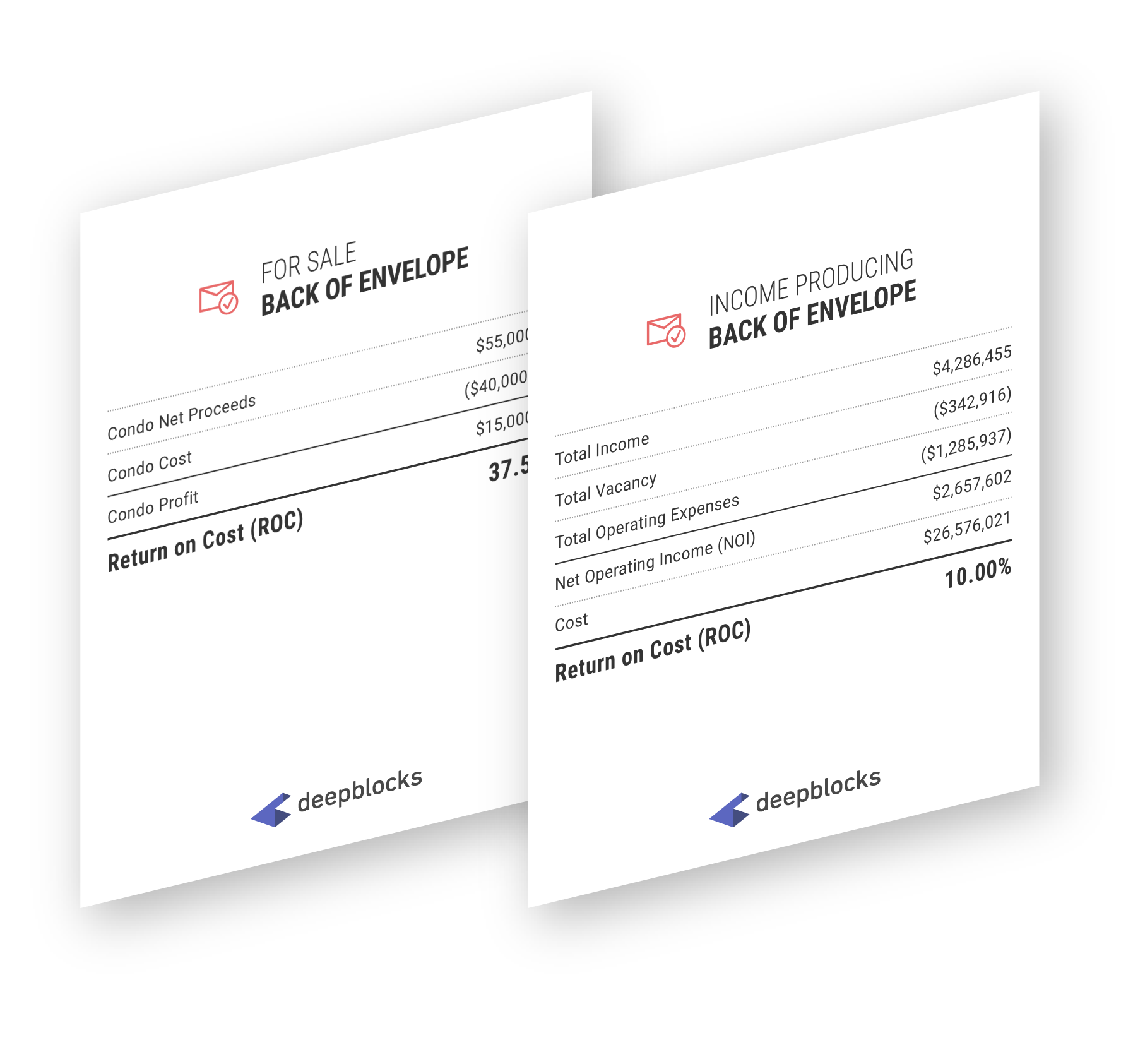Grasping the financial feasibility of income-producing properties, and for-sale properties, requires several stages of analysis. Going too deep too soon in the analysis process can be a waste of time, which is why we start with a “back-of-envelope” (BOE) calculation. The BOE is a one-year snapshot of a real estate project’s financial performance, often used to filter bad deals from a series of development options. The idea is to produce a simple measure across all properties, such as return on cost (ROC).
The basic formula for ROC is income minus expenses and vacancies, also known as the net operating income (NOI), divided by the total project cost.
Other General Terms
Basic Types of Leases
Gross Lease
Gross lease is the simplest. The tenant pays a stated amount of rent each month. This amount includes the basic expenses, such as maintenance, taxes, and insurance.
Triple Net lease (NNN)
Triple Net lease (NNN) is the reverse. The tenant pays a base rent but is responsible for the costs of using the space. This lease is generally used when there is only one tenant. If there are multiple tenants, an estimated percent of the expenses is included in the lease. If the expense payments exceed the estimated amount, this amount is reimbursed back to the landlord.
Expense Reimbursement
When a tenant is responsible for the operating expenses of a property, for example in a triple net lease (NNN), the landlord may choose to pay the operating expenses in advance and be reimbursed by the tenant at a later time.
Loss Factor
Loss factor is the percentage of the leasable or rentable area that is not usable by the tenant, because it contains things like service closets, trash rooms, vertical and horizontal circulation such as corridors and passageways, lobbies, and the like.
Vacancy
This is the percentage of the units or space that is not expected to be rented or leased. Examples include the time between tenants or the time required to improve the unit or property.
Operating Expenses (OpEx)
OpEx generally includes maintenance, taxes, and insurance.
Net Operating Income (NOI)
Net operating income is the revenue from the property minus vacancy rates and operating expenses.
Hard Cost
Hard cost is the cost of all physical assets plus labor associated with the construction of a project. Hard cost excludes land purchase, and in our software we have also excluded demolition cost. Demolition and land purchase are individual sliders in our project cost panel.
Our software breaks down hard costs by usage; for example, office and retail each have a dedicated cost slider. We also include a bolded value, to the right of the hard cost section of the project cost panel, which is the average cost per square foot for the entire project. This takes into account individual hard cost values and the square foot amount of each use.
Soft Cost
Soft cost accounts for expense items that are not considered direct construction costs, such as architecture, engineering, financing, and legal.
Contingencies
Contingencies refers to the percentage of the total cost, including hard and soft costs, that is allocated for unexpected events during the course of construction. Common examples are construction cost overruns and change orders.
Total Project Cost
The project cost is to the total cost of the development project, including hard and soft costs, contingencies, demolition, purchase price, and parking reduction fees (if applicable).
All-In Cost Per Square Foot (PSF)
The all-in cost per square foot is a standard measure of the project cost in order to compare similar projects or different versions of the project. This number is calculated by dividing the total project cost by the total buildable area.
Return on Cost (ROC)
Return on Cost (ROC) is a performance metric used to evaluate or compare development projects. The most basic ROC calculation is income minus expenses and vacancies, also known as net operating income, divided by total project cost.
If the ROC of a development project is attractive, then it makes sense to dive deeper into the analysis process with a ten-year pro-forma. Deepblocks will integrate the ten-year pro-forma with later versions of the software.






